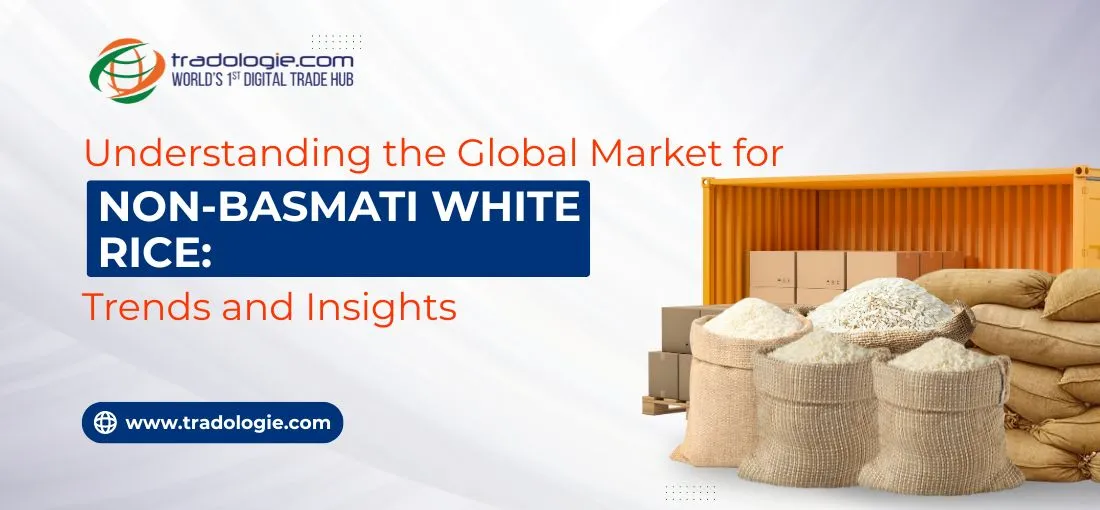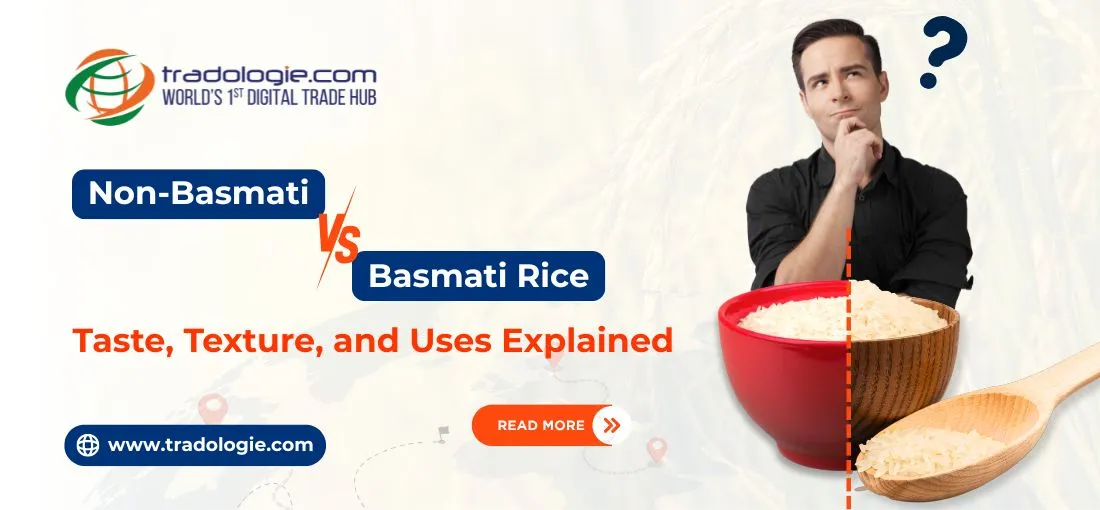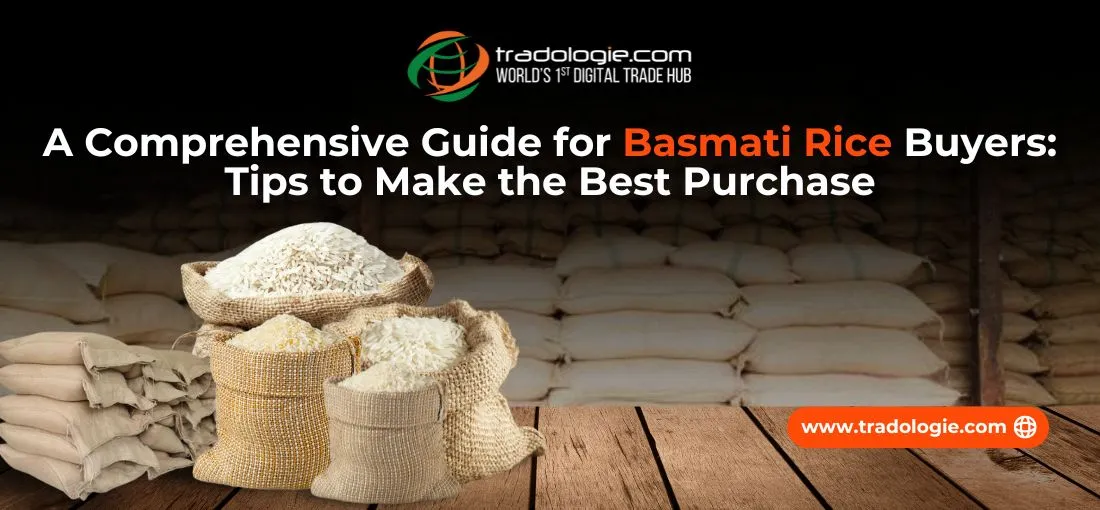Understanding the Global Market for Non-Basmati White Rice: Trends and Insights
Key Highlights on Non-Basmati White Rice
- Global Importance: Staple food for billions, affordable and adaptable for households, industries, and food security programs.
- Top Types: IR 64 (most in-demand), IR 36, Sona Masoori, Ponni, Parboiled, Swarna, Matta, Long-Grain, Short-Grain, Dubraj.
- Market Snapshot:
- Global exports 2025 forecast - 56.3 MMT (USDA).
- India, Thailand, Vietnam, Pakistan = 80% of global trade.
- India's FY 2024 exports - $852M.
- IR 64 Dominance: Affordable, versatile, mass-produced, widely consumed across Asia, Middle East, and Africa.
- Future Outlook: Population growth, urbanization, and food programs to drive bulk procurement opportunities.
Rice is one of the world's most important staple foods, feeding billions of people each day. Among all of its types, non-basmati white rice stands out as the most versatile and economical variety that contributes significantly to global trade. Its adaptability to various climates makes it a valuable commodity for households and economies all around the world. On the other hand, its different grain shapes and sizes make it suitable for a variety of meals.
There are different types of non-basmati white rice in the global market and each variety has its uniqueness.
So, in this blog, we will understand the global market for non-basmati white rice and the key trends and insights. If you want to export rice, or want to get general information about the industry, this blog is worth reading.
More Than Just Rice:
Non-basmati white rice is more than just rice; it's a means of survival for many countries. In fact, this versatile and widely consumed rice forms a staple for not just developing countries but also many developed countries with price-sensitive consumers.
Within the world of agro commodities, non-basmati white rice offers a major chance for food businesses to export rice in bulk in this lucrative international market. The surging global population, greater urbanization, and dietary preferences have established its importance as a key grain. It's about finding the right buyers and leveraging the opportunities.
Types Non-Basmati White Rice:
The sheer variety of non-basmati rice available in the global market makes it highly suitable for diverse food applications. Since each type of rice has a unique texture, it is suitable for different cooking needs. Rice importers around the import it based on their needs and preferences.
Have a look at the list of non-basmati white rice in the global B2B market with its characteristics.
| Type of Rice | Grain Length | Characteristics |
|---|---|---|
| IR 64 Rice | Medium (6mm–6.2mm) | Non-aromatic, lightweight, affordable |
| IR 36 Rice | Medium (5.8mm–6mm) | Pest-resistant, high yield, soft texture |
| Sona Masoori Rice | Medium to short | Lightweight, low starch, mildly aromatic |
| Ponni Rice | Medium | Soft texture, high fiber, easily digestible |
| Parboiled Rice | Varies | Nutrient-rich, partially boiled |
| Swarna Rice | Short to medium | Non-sticky, chewy, affordable |
| Matta Rice | Short and thick | Nutty flavor, high nutrients, reddish hue |
| Long Grain Rice | Long (over 6mm) | Slender grains, non-sticky, versatile |
| Short-Grain Rice | Round and short | High starch, sticky texture |
| Dubraj Rice | Short to medium | Aromatic, soft, fluffy |
The Numbers That Matter:
Global rice exports are expected to reach 56.3 million metric tons in 2025, which is slightly higher than the previous year's forecast and the second-highest level on record, according to Agriculture's (USDA) October 2024 Rice Outlook report.
Major producers such as India, Thailand, Vietnam, and Pakistan are the leading exporters of rice, collectively accounting for 80 percent of the rice traded globally. In the fiscal year 2024, India exported non-basmati white rice valued at $852 million, solidifying its status as a key supplier in the international market.
This surge in trade again highlights the world’s demand for nonbasmati white rice. This immense trade volume is a testimony to the fact of how much profit exporters can tap into through their exports in global markets.
Which Rice is in the Highest Demand?
The non-Basmati white rice in the highest demand globally is IR 64. It is popular in countries like India, Vietnam, and other parts of Asia and is also exported to places like the Middle East, Africa, and Europe.
- Affordable: IR 64 is cheaper compared to other rice varieties, making it a good choice for many countries.
- Versatile: It's used in many dishes like fried rice, biryanis, and pilafs.
- Large production: Countries like India and Vietnam produce a lot of IR 64 rice. This means the exporters have enough opportunities to cater to its global demands.
- Widely eaten: Both families and food industries use IR 64 rice around the world, making it very popular.
Conclusion:
Non-basmati white rice is an essential pillar of the global food system, meeting the dietary needs of billions and fueling economic growth in developing and developed nations alike. Its versatility, affordability, and adaptability to diverse climates make it a highly sought-after commodity in global trade. The variety of non-basmati white rice types ensures its suitability for a range of applications, from bulk food programs to premium dining. With major producers like India, Thailand, Vietnam, and Pakistan leading global exports, the market continues to expand, driven by rising population, urbanization, and changing dietary patterns.





